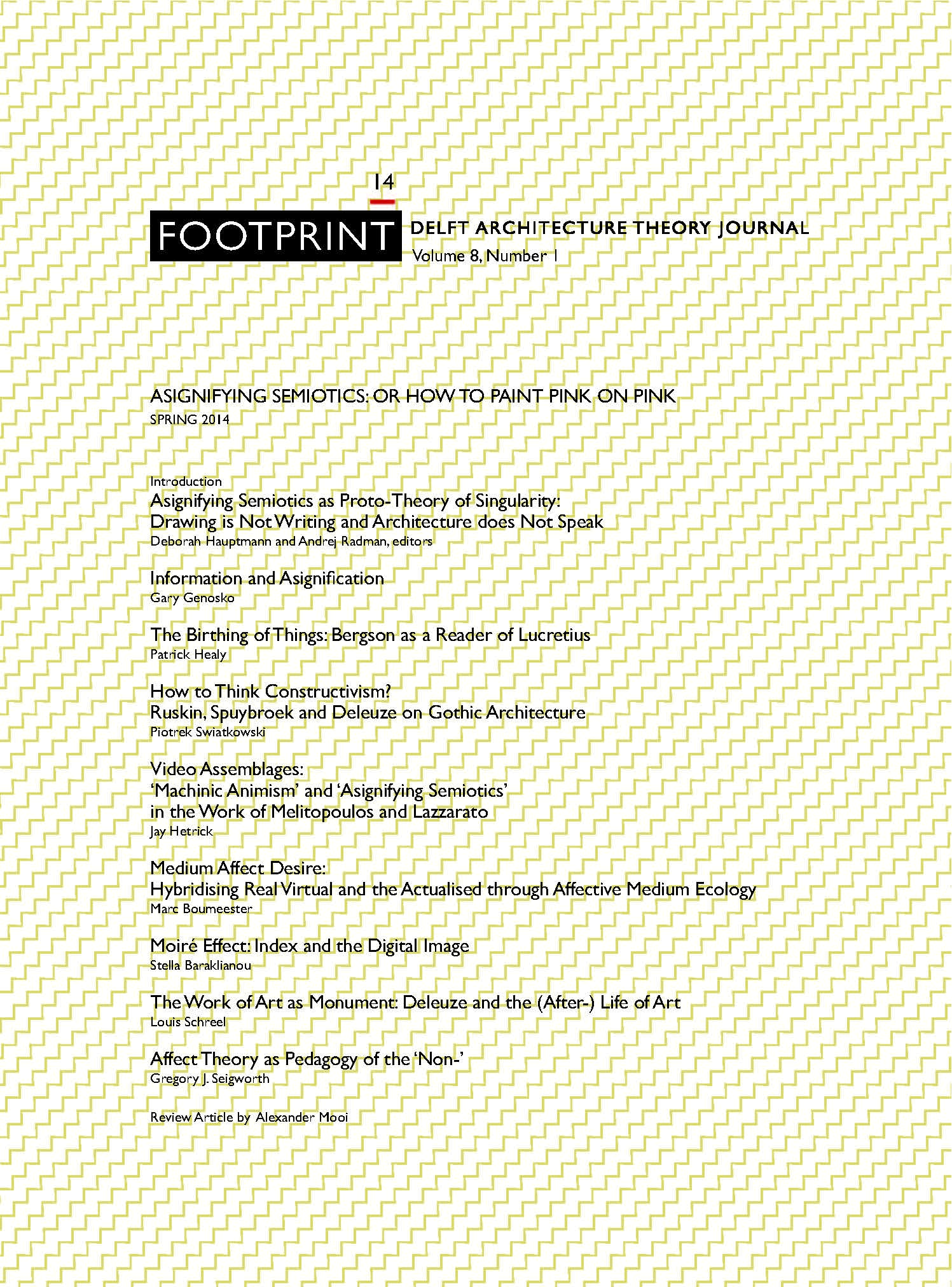The Work of Art as Monument: Deleuze and the (After-) Life of Art
DOI:
https://doi.org/10.7480/footprint.8.1.804Abstract
In the last chapter of What is Philosophy? Deleuze and Guattari conceptualise the work of art as a paradoxical monument which does not commemorate a past, but rather, preserves itself in the absence of man. The key to understanding this paradox lies in the further determination of the monument as a ‘being of sensations’: a ‘compound’ of ‘percepts’ and ‘affects’, meaning, a composition of invisible forces that populate the world, affect us, and make us become. Art would provoke an encounter with inhuman conditions of life which in daily, pragmatic life are often not given a chance. Yet, why still speak in terms of visibility and invisibility if there is not even an eye to perceive? How to understand a conception of art which refuses to think it in terms of human needs, for example exactly of commemorating the past? Deleuze was well aware of these questions, as the chapter on percept, affect and concept repeatedly re-affirms its radical appeal. In this paper I aim to elucidate this novel understanding of art as unwordly monument. I will do so firstly by looking into its implicit dialogue with the phenomenologists Erwin Straus and Henri Maldiney. Secondly, Theodor W. Adorno's essay 'Valéry Proust Museum' will serve as a ground for formulating what might be called the Deleuzian 'after-life' of art.
Downloads
Published
Issue
Section
License
- Authors retain copyright and grant the journal right of first publication with the work simultaneously licensed under a Creative Commons Attribution License that allows others to share the work with an acknowledgement of the work's authorship and initial publication in this journal.
- Authors are able to enter into separate, additional contractual arrangements for the non-exclusive distribution of the journal's published version of the work (e.g., post it to an institutional repository or publish it in a book), with an acknowledgement of its initial publication in this journal.





